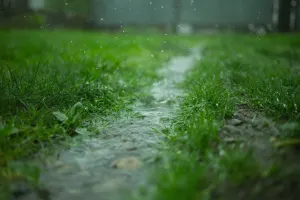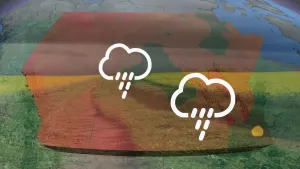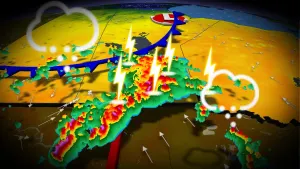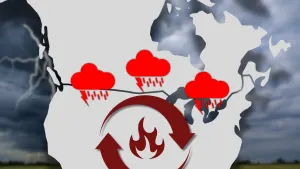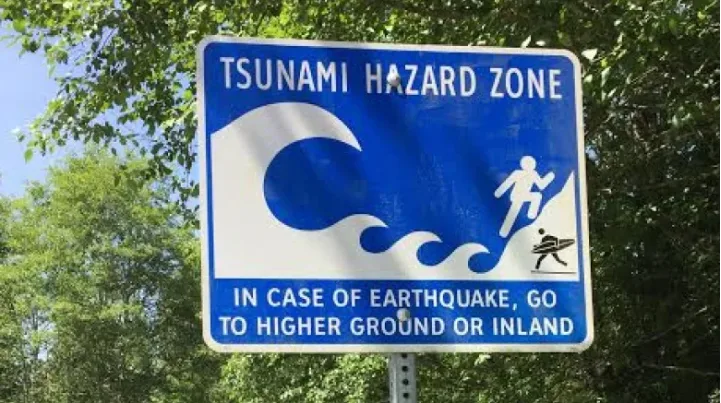
12 coastal communities in B.C. plan hikes for tsunami preparedness
Just like drills for fire and earthquakes, a practice for coastal communities to stay safe in the event of a tsunami is something the provincial government is trying to make commonplace.
Sunday kicks off Tsunami Preparedness Week in B.C. and a dozen coastal communities, ranging from Stewart to Victoria are hosting hikes, called High Ground Hikes, where the aim is to practice how to walk out of areas where there could be danger from a tsunami.
"It's a very great way to remind people of the extent of where the wave will hit and just how high they have to go and where their point of safety is," said Shaun Koopman with Vancouver Island's Strathcona Regional District.
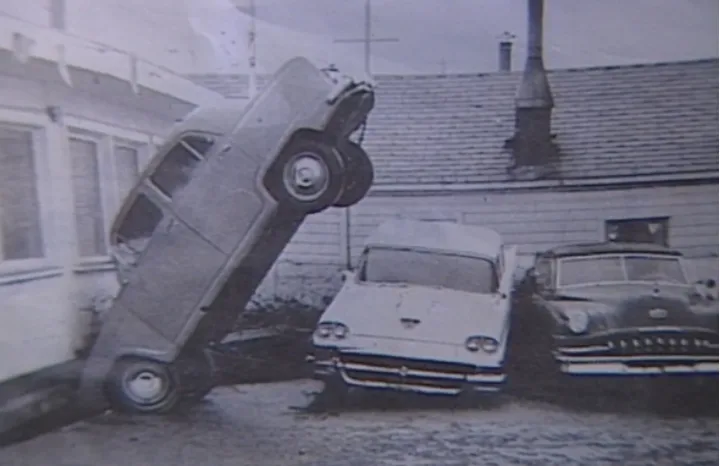
The tsunami that hit Port Alberni in 1964 upended cars and pushed houses off their foundations. (CBC)
A tsunami is a series of waves that results from a large and sudden displacement of the ocean that is most often caused by a large undersea earthquake. They can cause flooding and destruction.
On Jan. 14, a volcano erupted near the Tonga Islands, which triggered a tsunami advisory in parts of B.C.
The last major tsunami to hit B.C. shores was on March 27, 1964, when waves hit the B.C. coast and Port Alberni was flooded following the 9.2-magnitude Great Alaska Earthquake.
MUST SEE: GIANT LANDSLIDE TRIGGERED 100-METRE HIGH LAKE TSUNAMI IN B.C.
"I encourage everyone on the coast to learn about your local public alerting and to do a High Ground Hike with your family to learn how to find high ground, which is sometimes only a block or two away," said Jennifer Rice, parliamentary secretary for emergency preparedness, in a release.
Koopman, who is hosting a High Ground Hike in Kyuquot on northwest Vancouver Island, says it's important to do the hike just like you would in an emergency by dropping and covering for an earthquake, waiting for 60 seconds after shaking stops, and then leaving with a go-bag of supplies.
Josie Osborne, the MLA for Mid-Island Pacific Rim, said practicing what to do in an emergency is a way to feel confident about how to behave if an emergency like a tsunami should strike.
"You'll sleep better at night knowing, 'you know what? I know what to do, I know how to take care of myself, I know how to take care of my family,'" she said.
For more information about High Ground Hikes or tsunami preparedness visit preparedbc.ca/highgroundhike.
With files from Kathryn Marlow
This story was originally published by CBC News on April 10, 2022.






